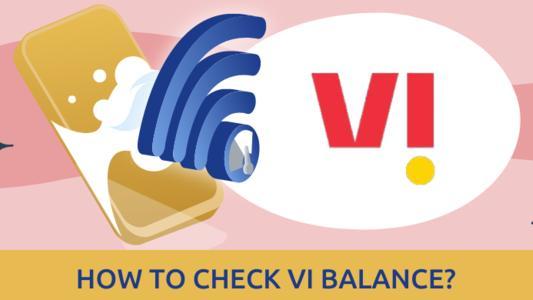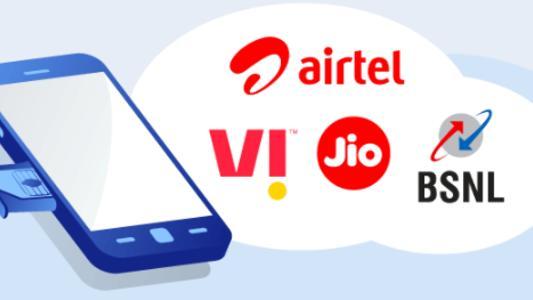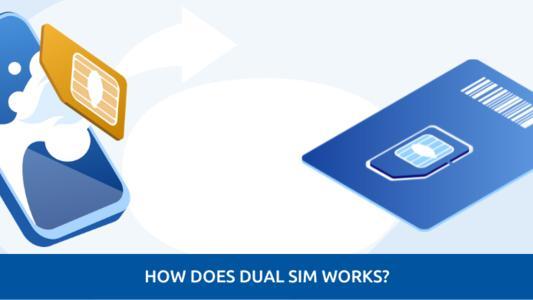Everything To Know About SIM Cards
A SIM card we know as a chip we insert in our phone helps us get network coverage from a specific network operator, but it is more than that. A SIM card is a noted feature required to carry out multiple mobile functions.
The full form of SIM is Subscriber Identity Module, and it is similar to a computer as it has a microprocessor base, storage, and operating system and built-in security features. A sim card can add, delete, send, receive data and also manipulate information within its memory. It provides state of the art security when configured with modern cryptography. Most SIM cards depending on the type, have a memory between 32 to 256 KB.
Due to the vast variety of features it offers, it’s imperative to choose the right SIM card for your phone. To make the process easier for you, we’ve provided a comprehensive guide you can browse through while choosing a SIM card.
How Does A SIM Card Work?
SIM cards are widely used all over the world. A technology so advanced and popular we forget the time it wasn’t there. It is one of the most popular technologies used in mobiles to communicate and make links within the servers and is also being used in various electoral projects. It is the sim that contains the key to identify and authenticate the subscribers on the communication system.
The Subscriber Identity Module contains the integrated circuit to store the International Mobile Subscriber Identity or IMSI. The SIM is embedded in a smart card which is removable and can be used in other devices.
The internal memory of the sim card stores data, personal and financial information and also identification of GSM/CDMA depending on the type. A Modern SIM card stores application data which communicates with the mobile device or the network/service using the SIM application toolkit. It authenticates the network and the identity of the user by storing network-specific information on the chip.
The SIM card has many keys, out of which some important ones are ICCID, IMSI, Authentication Key, Local Area Identification or LAI, and an operator-specific emergency number.
The sim card sizes are getting smaller and smaller. There are two smaller sizes of sims Micro and Nano, for the latest handsets. Sim card contains data like SMSC number to provide SMS facility to the user, SPN, Service dialling number, value-added services. A Sim can hold data between 32KB to 128k and can store up to 250 contacts.
Types of SIM Cards
There are two types of SIM cards; GSM and CDMA:
GSMGSM’s full-form is Global System for Mobiles, and it was created in 1970 in Bell Laboratories. GSM uses a narrow band transmission technique. A circuit system divided each 200khz signal into eight 25khz time slots and operated in 3 bands, 900mhz,800mhz, and 1.8mhz. The data transfer rates from 64kbps to 120kbps.
CDMACode Division Multiple Access (CDMA) is a communication channel principle that uses a time division multiplexing scheme and frequency division multiplexing scheme. It Is a unique coding scheme that uses spread spectrum technology.
The Difference Between GSM and CDMA
Both CDMA, which is Code Division Multiple Access, and GSM, which is Global System for Mobile communications, are radio systems used on mobile.
The usage difference between GSM and CDMA is one of the vital factors of distinction. GSM users can remove the sim card and put it in another device, but CDMA users have to agree to specific terms and conditions and call their CDMA network if they want to change the device.
GSM networks can transmit voice and data simultaneously compared to CDMA phones which can’t share the data and voice simultaneously. The quality of voice calling depends on the network coverage of your area but having said that; GSM users can expect a better quality of calls compared to CDMA.
GSM has a worldwide roaming feature, whereas CDMA has limited roaming options. CDMA has higher coverage towers that are widespread, but GSM also has dedicated network towers. Half of the world uses GSM SIM cards, but CDMA is used by countries like Japan, Canada and the United States of America.
Different Sizes of SIM Cards
SIM cards have three basic sizes; Standard SIM card (25x15mm), Micro (15x12mm) and Nano SIM card (12.3x8.8mm).
Standard SIM card size is the original size, Micro and Nano-SIM cards are smaller and trimmed out of the sides, which is the extra plastic around the golden microchip. Below is a detailed analysis of each size.
Standard SIM Card
A standard sim card basically has the same sized chip as micro and nano sim cards with just a lot of plastic around it which makes it the biggest size out of all three with 15mm x 25mm dimension. The chip is where the data is, so it’s just more significant in size because of the extra plastic, not because it can hold more data in it.
The standard or regular sim card is also the oldest amongst the three; it was introduced in the year 1996. It was used in a number of handsets back then, like iPhones 3GS and Nokia’s phones too. Nowadays, the smaller SIM cards are taking over, and the standard ones have become rare and only used in basic phones or old mobiles. The mobiles introduced recently have either micro or nano chip placement in them.
Micro SIM Card
A Micro SIM card is smaller than a standard sim card in size. The dimension is 12 x 15mm. As mentioned above, the chip size is the same as the standard sim card. It was introduced seven years after the standard one in 2003 and was used in almost all phones back then.
Now, many phones have slots only for Nano sims. Mobile phones that were introduced in the last five years mostly do not have a space for Micro sims. So if your phones are just a few years old but too new for a standard sim card, it probably has a micro sim card.
Nano SIM Card
With a 8.8 x 12.3mm dimension; Nano SIM cards were introduced in 2012 and currently are the latest SIM cards that have been introduced. Nano-sim cards are the only SIM cards that are being widely used now; almost all companies are only making slots for nano SIMs.
Functions of SIM Cards
Besides providing you network and connectivity, there are multiple functions of the SIM card that helps you connect with people seamlessly. Mentioned below are a couple of common functions of SIM cards.
1. Identification
The sim card, as it stands for, subscriber identification Module, first Identifies the user. The IMSI programmed on the sim is the identity of the subscriber. Every identity is given a unique number which is your mobile number. The IMSI is linked to the mobile number, which is the critical factor of identification.
2. Authentication
In this authentication process, the sim card uses an authentication algorithm which is a particular response given by each user. It is based on ISMI and RAND. The legal network subscriber matches the answer to the values computed; the user is logged into the network of the service provider and can now use their services.
3. Store Numbers
The SIM Tool Kit or GSM 11.14 standard allows the creation of applications to provide basic information like chatting, cell broadcast, contacts backup, location-based services and much more.
4. Overseas Connectivity
You can enable Roaming on your phone and keep using your sim card without changing your number in other countries or states. To activate the roaming feature on your phone, go to:
- Menu
- Settings
- Wireless connections
- Activate Roaming
You will have to keep your data off as you could be charged for data consumption based on the countries or states tariff plan.









